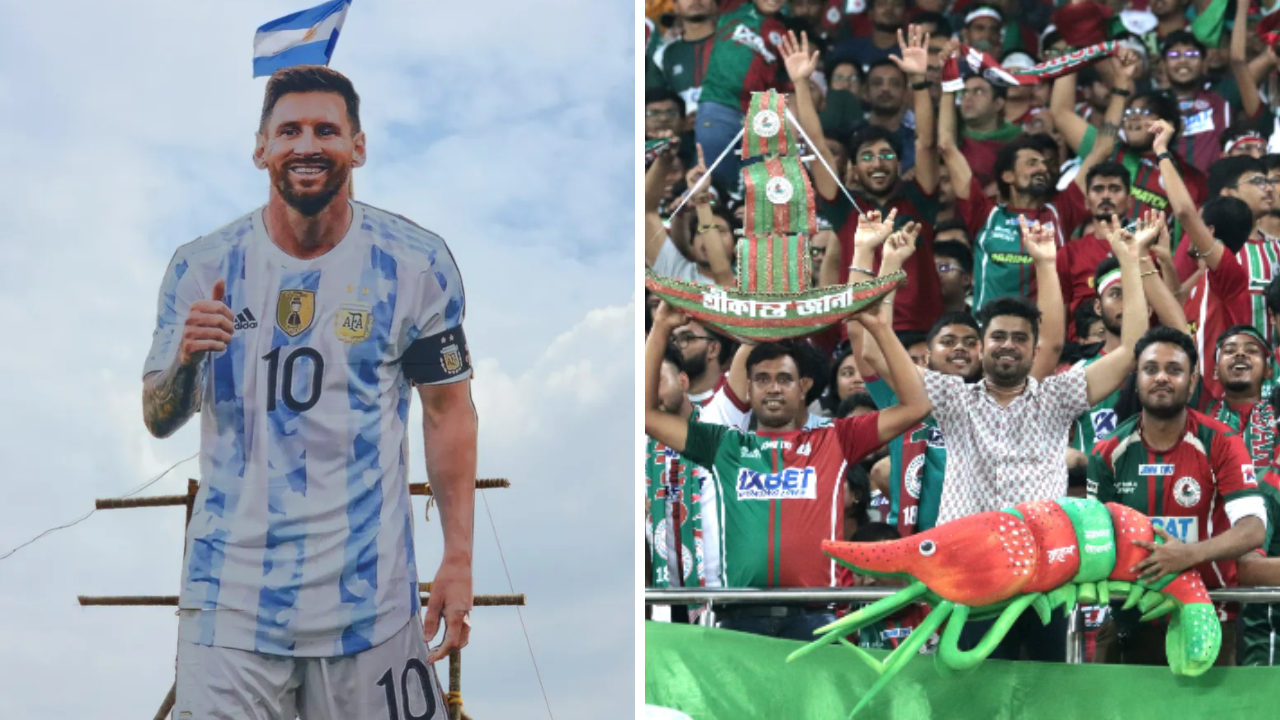
Growing up in Kolkata during the eighties, it was impossible not to take sides. You had to be either Chingdi or Iilish… I chose Mohun Bagan simply because the maroon-and-green appealed to me. Names like Cheema Okerie, Krishanu Dey, Bikash Panji, Jamshed Nassiiri and Majid were household ones … and many a piyanji and cha was consumed discussing their exploits.
When my father decided to retire and move back to his roots, I ended up in Kerala, my native place. And yet again, led by Diego Maradona, the Malayali considered Argentina his home team. Homes would be decorated in the blue and white colours during every international match occasion.
My first work assignment took me to Upper Assam, and I travelled extensively through the Northeast. Football is not just a sport here; it is a religion. And then it was time to take a vacation and where to but Goa… Goa breathes football like a festival where the pitch is an extension of the street, and every goal feels like a carnival beat.
I now live and work in Dubai and have worked across the Middle East markets. Last year I had the good fortune to work on a content show in the Latin American market. Both these markets resonate to the sport in much the same manner.
I am not complaining about football being intertwined with my life. But I am puzzled as to what unites all these geographies with the sport so much.
Football in the Middle East is more than sport. It is a binding language in a fractured region, where national victories carry the weight of political pride. Iraq’s improbable Asian Cup win in 2007 gave a war-ravaged nation a fleeting sense of unity. Morocco’s historic World Cup semi-final run in 2022 turned the Arab world into a single cheering block. And when Saudi Arabia stunned Argentina in Qatar, it was celebrated as much for national dignity as for sporting glory.
Governments have noticed. Saudi Arabia’s sovereign wealth fund owns Newcastle United. Qatar spent $220 billion to host the World Cup. The UAE’s City Football Group has created a multi-club empire. Football, here, is soft power, youth engagement, and brand-building, all rolled into one.
In Kolkata, Mohun Bagan versus East Bengal has always been more than football. It carries the scars of Partition, refugee identity, and class divides. In Kerala, the Gulf diaspora made football their cultural lifeline. Families who migrated to Saudi or Dubai sent home not just remittances but also a footballing culture, embedding the game into local festivals and lives.
Goa’s Portuguese legacy ensured that football grew up alongside Carnival, church bells, and sea breeze. Clubs like Dempo and Salgaocar carried that passion into national leagues. In many ways, Goa is India’s Brazil… the samba touch, the carnival atmosphere, the football-as-faith ethos. Morocco, Tunisia, and Lebanon share that Mediterranean rhythm, infused with European links.
For Mizoram, Manipur, and Nagaland, football became a voice of assertion, a way to matter in the Indian imagination. In a region often neglected, the game gave youth not just escape, but identity. Isn’t that what Qatar did by hosting the World Cup? Or what Morocco did by beating Spain and Portugal?
In the Latin American countries, the street is the nursery, and football heroes like Maradona transcend sport to become cultural messiahs. Brazil’s military dictatorships have used football for legitimacy and politics has often worked up the football frenazy. It is the same emotional cocktail: hope, poverty, pride, faith, festivity — all expressed through a ball.
The popularity of football in the Middle East, like Kerala, Bengal, Goa, the North East, and Latin America, rests on three truths:
- Economics are tough but dreams are cheap
- Community bonds are strong, and football is ritual
- Global aspiration meets local identity
In Europe, football is industry. In the US, it is still novelty. But in the Middle East, in India’s footballing hotbeds, and in Latin America, football is life itself. That is why the game endures here — as religion, rebellion, and release.
Also Read: Manchester United’s Latest outing: A Club Stuck in Its Own Shadow




